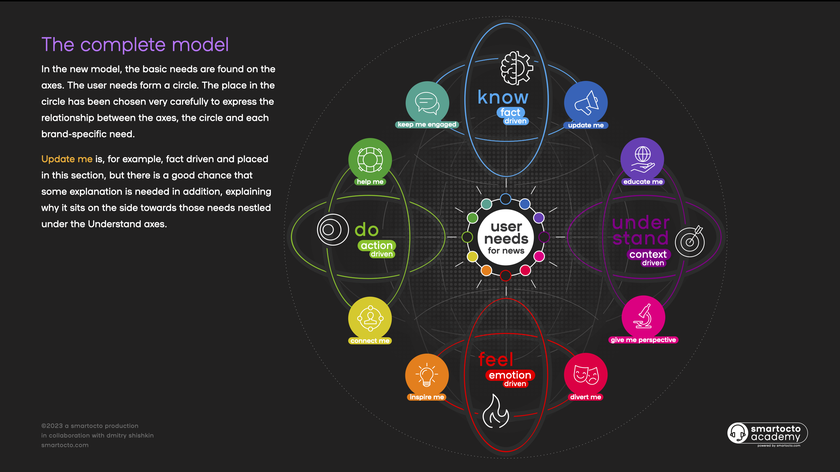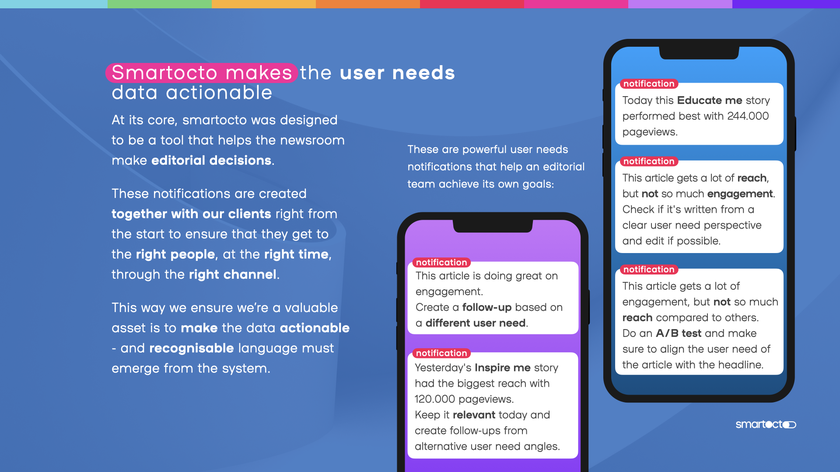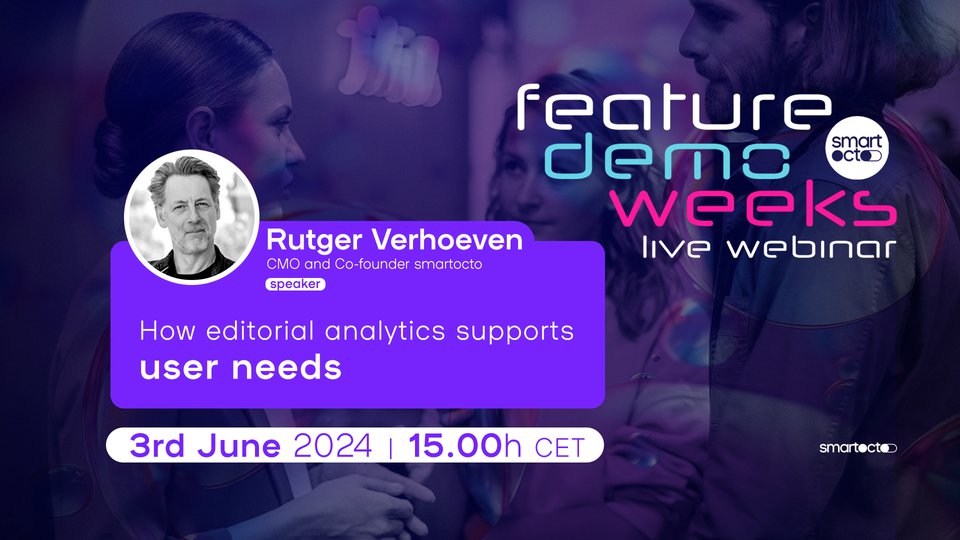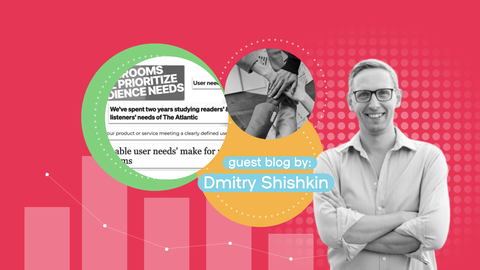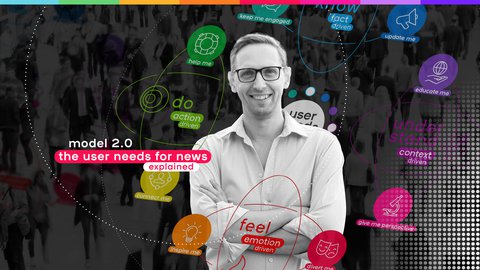What do people want from news?
Modern audiences are becoming more demanding when it comes to news. They're not simply looking for updates, they also want to be educated on certain topics, read inspiring stories and learn more about possible solutions to problems. Many readers are looking for stories that provide them the knowledge they need to participate in conversations, make decisions about things that affect them and keep a more positive outlook on current events.
The BBC World Service developed the user needs model after thorough research into the demands of their own audiences. When questioned, people offered different reasons why they consume news, which can be summed up in six 'user needs':
- Update me
- Keep me on trend
- Give me perspective
- Educate me
- Divert me
- Inspire me
New user needs (2023)
Helpfully, some publishers, like the BBC in its initial groundbreaking research, shared their insights publicly, and by doing so strengthened the trend. Amongst the early adopters were Buzzfeed, Wall Street Journal, Vogue, TRT and Culture Trip. Recently, Atlantic, Vox and LAist have become the latest publishers to write up their strategies.
Fundamentally, the new model distils the wisdom, experience and learnings from both our own research and development and those approaches used by other publishers and presents it into a rock-solid schema. The new model is both more comprehensive and more actionable than those before it, and its visualisation is strikingly clear. One of the original user needs has been reframed; two new user needs have been added.
Do user needs-focused articles perform better? (2025)
Fundamentally, the user needs concept is there to ensure the audience is put at the heart of the newsroom’s output. And, whether you’re aware of it or not, when you’re commissioning articles, you have two choices: to pull focus around a single user need - or to not.
In our latest research (February 2025) we show proof that you'd better have a clear focus writing a story. Download the results of a data study we did with Ringier Media International.
